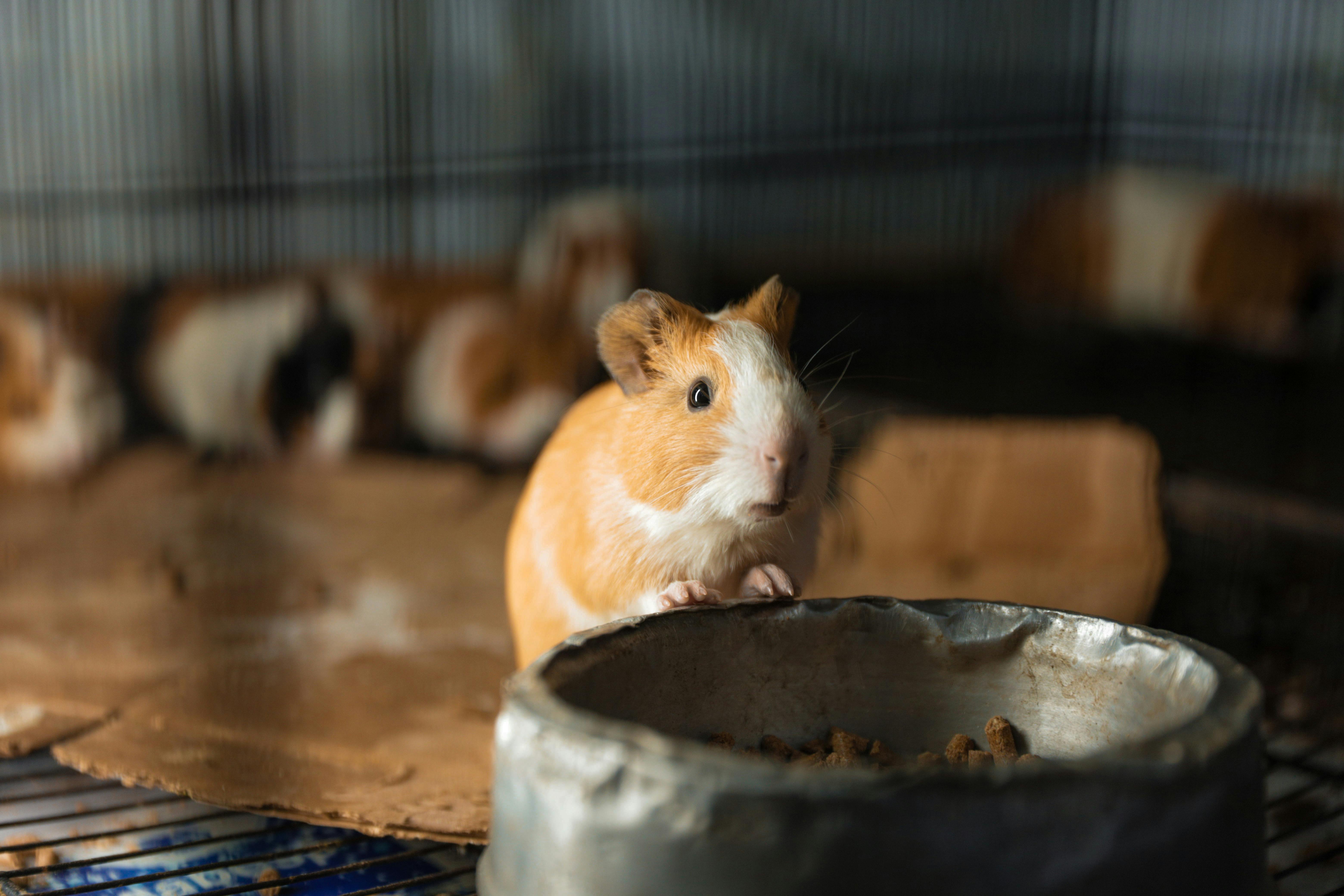Essential Aquarium Setup for 70 Gallon Tanks
Choosing the Right Location for Your Aquarium
When setting up a 70-gallon fish tank, the first step is selecting the perfect location. The chosen spot should be away from direct sunlight and heat sources to prevent temperature fluctuations, which can stress your aquatic life. Additionally, the surface must be sturdy enough to support the weight of the tank, which can exceed 800 pounds when filled. It's vital to ensure that the aquarium is near a power source for your equipment and can also support water changes without hassle.
Creating a Balanced Fish Tank Ecosystem
A balanced ecosystem is crucial for a healthy fish tank. Begin with choosing the right substrate; 70-gallon tanks offer the flexibility to use both sand and gravel suitable for various aquatic life. Incorporating live plants will not only enhance the beauty but also help in natural filtration. Plants absorb harmful toxins, contributing to the overall water quality. Ensure that you pick fish species compatible with each other and your tank's environment. Keeping a diverse but compatible population will lead to a vibrant and active aquarium.
Investing in Quality Aquarium Equipment
Quality equipment is essential for maintaining a stable aquatic environment. Invest in a reliable filtration system that matches the size of your 70-gallon tank to maintain water clarity and remove toxins effectively. A heater is also necessary to keep the water at an optimal temperature for your selected freshwater fish. Furthermore, consider LED lights for aquariums as they are energy-efficient, enhancing plant growth while keeping your tank visually appealing. Consistent maintenance of these tools is key to ensuring long-term tank stability.
Understanding the Nitrogen Cycle in Your Tank
The nitrogen cycle is foundational to a successful aquarium setup. This process involves the breakdown of fish waste into ammonia, which beneficial bacteria convert into nitrites and then into nitrates. Cycling your tank before adding fish is critical to establish these bacteria colonies. Utilize an aquarium testing kit to monitor levels of ammonia, nitrites, and nitrates to ensure they are within safe parameters. Regular testing will prevent toxic buildups, safeguarding your fish's health.
Implementing Effective Water Quality Management
Water quality is paramount in any fish tank environment. Regular water changes, typically 10-15% weekly, help remove toxins and replenish essential minerals. Use an aquarium water conditioner to dechlorinate tap water before adding it to the tank. It's also advisable to keep an eye on water parameters like pH and hardness, which can affect fish health. Integrating an aeration system can improve oxygen levels, benefiting both fish and beneficial bacteria. Maintaining these water quality standards ensures the longevity of your aquatic life.
Enhancing Your Tank with Aquatic Decorations
Aesthetics play a vital role in creating a thriving aquatic environment. Thoughtfully placed decorations can provide hiding spots for fish and enhance the overall look of your aquarium. Driftwood, rocks, and plants can help create a natural habitat. However, it's essential to ensure that these decorations do not have sharp edges that could harm fish. Maintain a balance between beauty and function, ensuring that your aquatic decorations support the ecosystem's health.
Understanding Fish Tank Maintenance
Establishing a Regular Maintenance Schedule
Consistency is vital in fish tank maintenance. Creating a maintenance schedule will help you keep track of when to perform routine tasks such as cleaning the substrate, changing the water, and testing the parameters. For a 70-gallon tank, weekly inspections can save you from potential disasters. Regularly checking your equipment also ensures filtration and heating systems function efficiently, helping to maintain a healthy environment.
Cleaning Techniques for Optimal Tank Health
It’s important to clean your fish tank to prevent algae growth and maintain water clarity. Use algae scrapers and siphons for gravel cleaning during water changes. When cleaning decorations or plants, avoid harsh chemicals that may harm fish. Instead, use warm water or specific aquarium-safe solutions. Regular cleaning not only enhances visibility but also supports healthier living conditions for your fish.
Controlling Algae Growth and Tank Pests
Managing algae growth is crucial for maintaining an optimal aquatic environment. Too much light or excess nutrients can lead to blooms. Employ algae control methods, such as increasing water circulation and adding algae-eating fish or shrimp. Keep temperatures stable and manage light duration to deter excessive growth. Moreover, inspect your tank routinely for pests, such as snails or unwanted algae, and consider using quarantine tanks for new additions to prevent infestations.
Maintaining Equipment in Your 70 Gallon Tank
The equipment used in your 70-gallon fish tank directly impacts the aquatic life. Regularly clean and replace parts of your filtration systems and inspect heating elements for effectiveness. A well-maintained tank includes routine design checks to ensure that all equipment is functioning correctly. This practice will not only extend the lifespan of your equipment but will also maintain a stable environment for fish and plants.
Managing Water Quality and Temperature
Water quality management goes beyond regular changes; it encompasses ensuring temperature remains stable. Different fish species have unique temperature requirements, and fluctuations can stress your fish. Therefore, invest in a reliable heater to maintain the temperature. Using an aquarium thermometer will help monitor this as well. Additionally, regularly test your water parameters to prevent conditions that could lead to disease outbreaks or other health problems for your aquatic life.
Fish Tank Cleaning Frequency and Best Practices
A well-maintained tank does require cleaning, but the frequency can vary based on fish stocking levels and the number of live plants. For a 70-gallon tank, consider cleaning routines spaced 2–4 weeks apart, adjusting based on fish health indicators and tank activity. Always observe the behavior of your fish; if they display unusual signs, it may be time for a more thorough cleaning. Maintain records of cleaning dates and parameters which will guide your future maintenance choices.
Stocking Your 70 Gallon Tank: Best Practices
Understanding Fish Compatibility for Aquatic Life
Choosing the right fish species is critical for a harmonious tank environment. Researching compatibility among your preferred aquatic species is key for ensuring your fish's health and comfort. For instance, schooling fish like Tetras thrive when kept in groups, while some territorial species may need room to establish their territory. Use tank compatibility charts to assist in selecting species that coexist peacefully.
Calculating the Right Fish Stocking Levels
Stocking levels impact tank stability. As a rule of thumb, aim for one inch of fish per gallon of water. For a 70-gallon tank, this may allow for approximately 70 inches of fish when considering adult sizes. While this standard provides guidance, factors such as filtration capacity, fish behavior, and available space also determine how many fish you should keep. Monitoring fish health and tank conditions will guide you on adjusting stock levels appropriately.
Live Plants: Low Maintenance Options for Beginners
Live plants not only enhance your tank's aesthetic but also improve water quality. For beginners, consider low-maintenance options like Anubias and Java Fern, which tolerate a range of water conditions. Additionally, these plants enhance the ecological balance by providing oxygen and reducing toxins. As your skills grow, you can explore a wider variety of aquatic plants that need more care, contributing further to the biodiversity of your tank.
Fish Breeding Techniques in a Home Aquarium Setup
If you're interested in breeding fish, your 70-gallon tank can become a conducive space. Research species that are known for ease of breeding. Implement breeding techniques, such as providing spawning sites and separating males and females during breeding periods. Once eggs are laid, it’s prudent to remove parents to prevent them from eating their young. Maintain optimal water quality throughout this process to ensure the survival of your fry.
Best Foods and Feeding Techniques for Healthy Fish
Feed your fish a well-balanced diet tailored to their specific needs. High-quality fish food provides the necessary nutrients for growth, health, and color enhancement. Additionally, monitor feeding schedules to prevent overfeeding, which can lead to water quality issues. Offering a variety of food options, including flakes, pellets, and frozen or live food, will encourage natural feeding behaviors and contribute to a healthy diet.
Maximizing Your Tank's Aesthetics and Environment
Decorative Ideas for a Stunning Aquarium
Beautiful aquascaping can significantly enhance your tank's ambiance. Utilize various aquatic decorations to create stunning visuals—consider adding natural elements like driftwood and rocks. Layering substrate can add depth to your landscaping, while strategically placing plants will enhance the vertical space and encourage fish to explore. Additionally, make sure that decorations contribute positively to your fish's habitat—providing hiding spots while ensuring they do not obstruct water flow.
Innovative Lighting Options for Enhanced Viewing
Proper lighting influences your aquatic plants' growth and the overall aesthetic appeal of your aquarium. Explore various fish tank lighting types, opting for adjustable LED lights that can replicate natural day-night cycles. This will not only benefit your plants but enhance the colors of your fish. Moreover, proper lighting will encourage fish to exhibit social behaviors, allowing you enjoyable viewing experiences during different times of day.
Creating a Thriving Aquatic Environment with Plants
Live plants are fundamental to a thriving aquatic ecosystem. Aside from their beauty, they naturally filter the water and provide shelter for fish. Consider incorporating a mix of fast-growing species and slower growers to maintain balance. Regular trimming of plants promotes healthy growth and prevents overcrowding that could complicate maintenance efforts. Ensure you choose aquatic environments that mimic their natural habitats for the best plant health and overall tank success.
Understanding the Role of Substrates in Your Aquarium
The choice of substrate impacts water quality and fish health. Opt for suitable substrate designed for your specific fish type and plant life—gravel is an excellent choice for general tropical setups, while a sandy base can be ideal for bottom-dwelling species. Introduce natural elements such as leaf litter or soil layers that can support plant growth and provide a naturalistic appearance. Consistent substrate care will enhance your tank’s overall health and beauty.
Successful Techniques for Tank Aquascaping
Tank aquascaping is both an art and science. Begin with a plan, sketching out your vision before moving decorations around. Use the rule of thirds to create a balanced layout, giving focal points while ensuring free fish movement. Layering elements by height can also enhance the depth of your tank. Regularly reassess your aquascape for any necessary adjustments based on the growth of plants or health of your fish, ensuring it remains an engaging environment.
Q&A: Common Questions About 70 Gallon Fish Tanks
How do I maintain water quality in my 70-gallon tank?
Maintaining water quality involves regular water changes, using a reliable filtration system, and testing for ammonia, nitrites, nitrates, pH, and hardness levels. Utilize aquarium water conditioners as needed and monitor your fish for signs of stress or illness.
What fish are best suited for a 70-gallon aquarium?
Choosing species depends on compatibility and adult size. Community fish such as Tetras, Guppies, and Corydoras work well, while larger species such as Cichlids or Angelfish may also fit. Always research the behavior and habitat needs of each species to ensure harmony.
What should I consider when adding live plants to my aquarium?
Assess light availability, water parameters, and fish compatibility before selecting plants. Fast-growing species can help control algae, and plants like Anubias or Java Fern require low maintenance, making them great for beginners.
How can I prevent disease in my fish tank?
To prevent diseases, maintain a clean tank, monitor water conditions, and ensure healthy feeding practices. Quarantine new fish before introducing them to your established aquarium to minimize the risk of introducing illnesses.
What are the benefits of using LED lights in my aquarium?
LED lights are energy-efficient and produce less heat, reducing the risk of temperature fluctuations. They also enhance the colors of fish and plants while providing adequate light for photosynthesis, promoting healthy plant growth.


